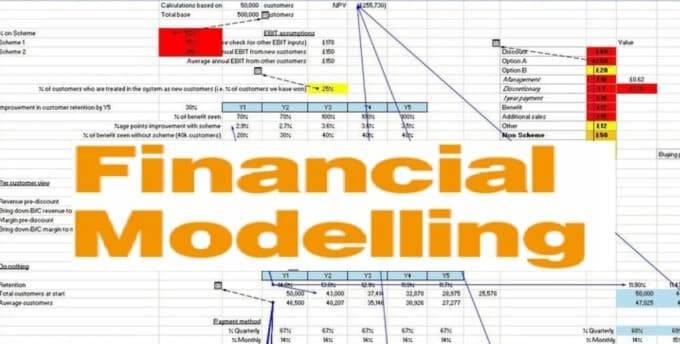
FINANCIAL MODELLING & FORECASTING
12th– 14th March, 2025 26th-28th May, 2025
4th-6th August, 2025 3rd -5th November, 2025
Introduction
Financial modeling is the task of building an abstract representation (a model) of a real world financial situation. This is a mathematical model designed to represent (a simplified version of) the performance of a financial asset or portfolio of a business, project, or any other investment. Financial modeling is a general term that means different things to different users; the reference usually relates either to accounting and corporate finance applications, or to quantitative finance applications. Typically, financial modeling is understood to mean an exercise in either asset pricing or corporate finance, of a quantitative nature. In other words, financial modelling is about translating a set of hypotheses about the behavior of markets or agents into numerical predictions; for example, a firm’s decisions about investments (the firm will invest 20% of assets), or investment returns (returns on “stock A” will, on average, be 10% higher than the market’s returns).
Financial Modelling covers areas such as Discounted Cash Flow DCF, Time value of money, revenue projection, cash-flow and financial projection. It also encompasses capital budgeting-investment appraisal, using the modern techniques like NPV and IRR. Measuring weighted average cost of capital WACC. It also involves valuation of equity-stock and bond among others. It is the integration of income statement, balance sheet and cash flow statement.
This training is a hands-on on exactly what you need in mastering an investment banking, become an investment and financial modelling professionals.
Course Content
Module One: Introduction to financial modeling and financial statements
Introduction to financial statements, Steps To Create Integrated Financial Model Creating A Layout For Integrated Model Excel Shortcuts, Cell Referencing Framework In Excel, Custom Formatting In Excel, Understanding Circular References in Excel , Conditional formatting.
Module Two; Time Value of Money in Excel and What if Analysis
PV and FV of Annuity; (Single and Multiple Cash flow), Amortization; (Constant and general discount rate), Sensitivity analysis. What if Analysis; One & Two way Data table, goal seek, , scenario manager. Using solver for business and investment decision optimization.
Module Three: Capital Budgeting
Investment Appraisal techniques using the modern techniques of investment appraisal such as (NPV, IRR, PBP) with powerful sensitivity in Ms-Excel.
Module Four: Business Modeling Basic Case
Equated monthly instalments Basic Case, Dissecting the Business Case,
PL & BS Drivers , Building Assumptions , Projecting Financial Statements
Financial Statement Analysis
Credit Risk Model
Module Five: Understanding the methodologies of dynamic modelling & Forecasting
Free Cash Flows (to the Firm and Equity) – FCFF, FCFE, Calculating FCFF and FCFE, Understanding Cost of Capital – WACC, Understanding terminal value, Linking the 3 financial statement (P&L, BS and Cashflow statement). Forecasting financial statement. Financial reporting Dashboard
Case Study: Road Toll Project Modelling
Stating all the tolling assumptions. Inflation index and other parameters. Operating and Capital expenses. Toll financing. Ratio Analysis.
Duration: Three (3) days Fee: N250,000
Phone No:
08052062320, 08095284269, 07085271570
Email Address
training@nazellinkconsult.com info@nazellinkconsult.com
Contact Info
Address
2nd Floor, Acme House, 23, Acme Road, Ogba, Ikeja,Lagos. Nigeria.
Phone No:
08052062320, 08095284269,
07085271570
Email Address
info@nazellinkconsult.com
